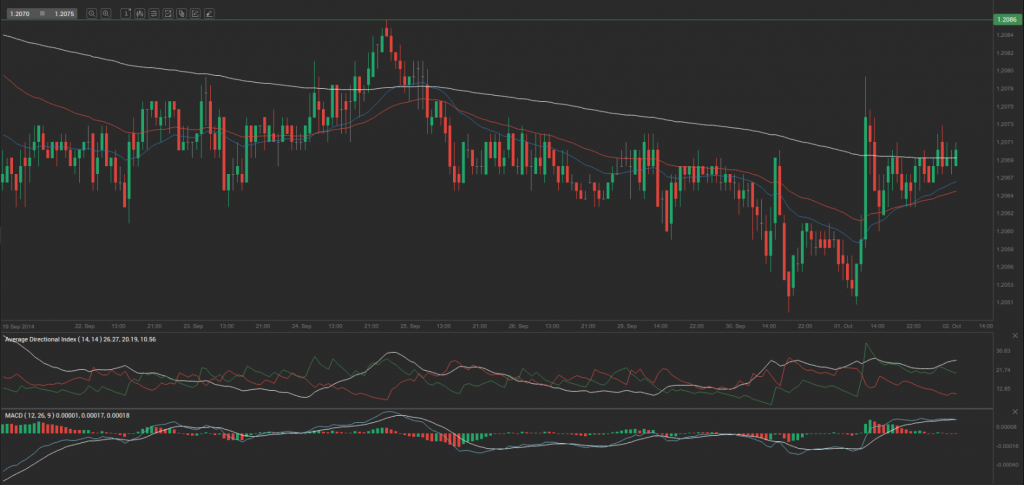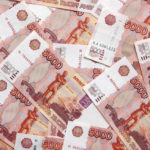Yesterday’s trade saw EUR/CHF within the range of 1.2044-1.2083. The pair closed at 1.2068, gaining 0.01% on a daily basis.
At 6:19 GMT today EUR/CHF was up 0.03% for the day to trade at 1.2072. The pair touched a daily high at 1.2075 at 3:10 GMT.
Fundamental view
Euro zone
Spanish unemployment change
The number of the unemployed people in Spain probably increased by 31 300 in September, according to the median forecast by experts, following another increase by 8 070 during August. An increase implies labor market weakness and, respectively, less active consumer spending, while the latter is tightly related to economic growth. A decrease implies the opposite. In case the number of people unemployed surged more than projected, this would be a bearish impulse for the euro. The official unemployment data is due out at 7:00 GMT.
European Central Bank policy decision
At 11:45 GMT the European Central Bank (ECB) is to announce its decision in regard to borrowing costs. The median estimate by experts suggests that the central bank will probably maintain its benchmark interest rate at the record low level of 0.05% at the policy meeting today. The bank reduced the refinancing rate by 10 basis points to the current 0.05% at the September 4th meeting. This was the fourth time this year, when the ECB cut its benchmark rate. The bank also reduced the deposit facility rate to -0.2% from -0.1%.
In September the ECB Governing Council decided to begin purchasing a broad portfolio of simple and transparent asset-backed securities (ABSs), with underlying assets consisting of claims against the Euro area non-financial private sector. At the press conference, following the policy decision in September, ECB President Mario Draghi noted: ”The Eurosystem will also purchase a broad portfolio of euro-denominated covered bonds issued by MFIs domiciled in the euro area under a new covered bond purchase programme (CBPP3). Interventions under these programmes will start in October 2014. The detailed modalities of these programmes will be announced after the Governing Council meeting of 2 October 2014. The newly decided measures, together with the targeted longer-term refinancing operations, which will be conducted in two weeks, will have a sizeable impact on our balance sheet.” With these measures the bank aims to enhance the function of the monetary policy transmission mechanism and to ease the flow of bank funding to the overall economy.
As annualized producer prices in the Euro zone dropped for the first time since April in July and probably continued to fall in August as well, and the fact that manufacturing activity in Germany contracted in September, the central bank may be urged to take even more drastical measures in order to stimulate consumer demand and, respectively, inflation.
Yesterdays report by Markit Economics revealed that Germanys final manufacturing PMI fell below the key level of 50.0, which divides optimistic from pessimistic estimates. The index came in at 49.9 in September, mismatching the preliminary reading and market expectations of 50.3. French final PMI confirmed the preliminary reading of 48.8, while Euro zones final manufacturing PMI slowed down to 50.3, also below expectations, pointing to 50.5. These data pushed EUR/USD to a fresh two-year low at 1.2585.
On the other hand, the annualized Producer Price Index (PPI) in the Euro region probably fell 1.2% in August, according to expectations, following another 1.1% drop in July. The official data by Eurostat is to be published at 9:00 GMT today.
ECBs Governing Council aims to keep prices in the region stable, while stability is defined as a year-on-year increase in the Harmonized Index of Consumer Prices (HICP) for the Euro zone of below 2%.
Short-term interest rates are of utmost importance for the valuation of national currencies. In case the European Central Bank is dovish about inflationary pressure in Euro zones economy and, thus, either puts interest rates on hold, or reduces them further, this will usually cause a bearish impact on the common currency.
The interest rate decision is to be followed by the press conference with ECB President Mario Draghi, during which volatility of euro crosses is usually high. In case Draghi offers a more hawkish tone, the euro will usually receive support, while a more dovish tone will have a bearish effect on the currency. The press conference is scheduled at 12:30 GMT.
Technical view
According to Binary Tribune’s daily analysis, the central pivot point for the pair is at 1.2065. In case EUR/CHF manages to breach the first resistance level at 1.2086, it will probably continue up to test 1.2104. In case the second key resistance is broken, the pair will probably attempt to advance to 1.2125.
If EUR/CHF manages to breach the first key support at 1.2047, it will probably continue to slide and test 1.2026. With this second key support broken, the movement to the downside will probably continue to 1.2008.
The mid-Pivot levels for today are as follows: M1 – 1.2017, M2 – 1.2037, M3 – 1.2056, M4 – 1.2076, M5 – 1.2095, M6 – 1.2115.
In weekly terms, the central pivot point is at 1.2073. The three key resistance levels are as follows: R1 – 1.2092, R2 – 1.2112, R3 – 1.2131. The three key support levels are: S1 – 1.2053, S2 – 1.2034, S3 – 1.2014.






